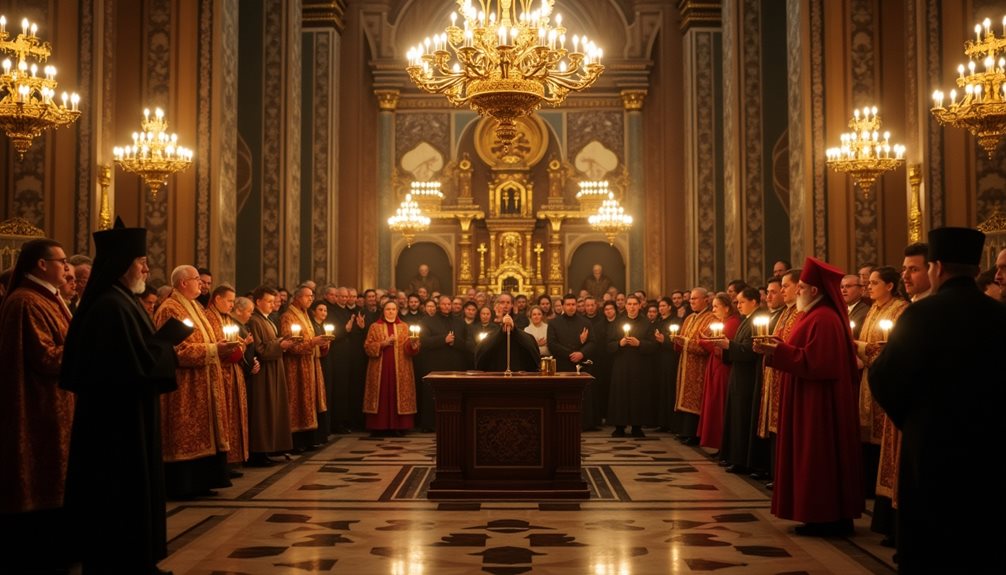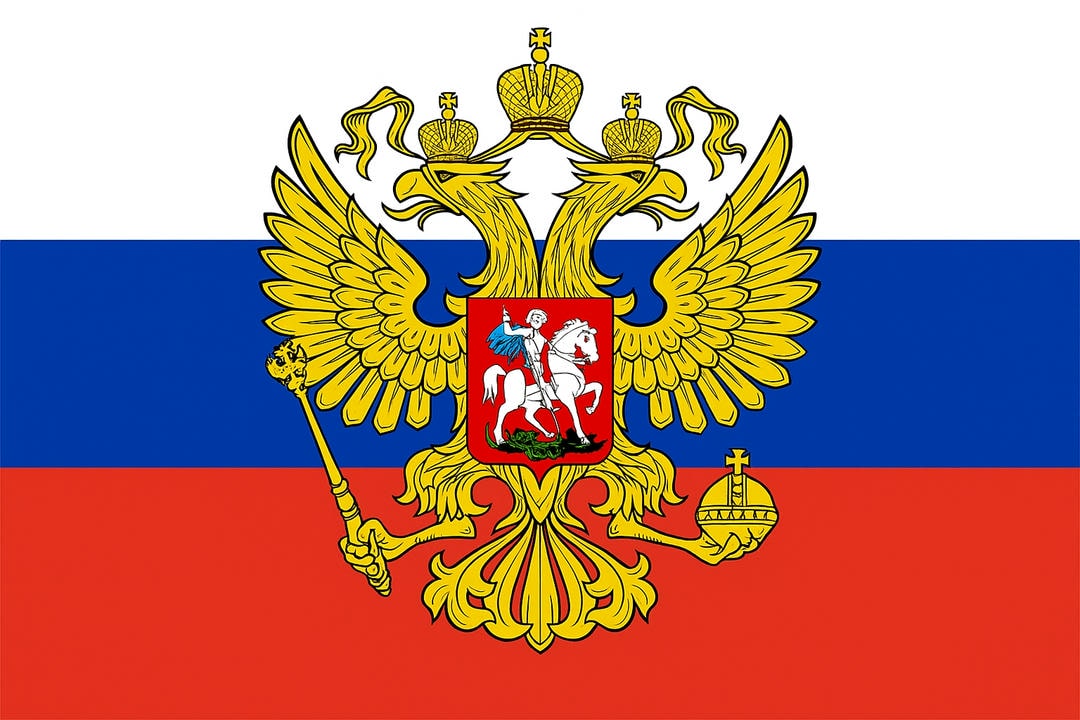Anton Chekhov’s stories capture the subtle complexities of human nature, often revealing profound truths in the most ordinary of circumstances. Works like The Chameleon and Ionych explore the fickleness and folly of people, while Loyalty Beyond Boundaries and The Heartbreaking Letter of an Orphan tug at the heart with their emotional depth and moral questions. Stories such as The Student and Man in a Case delve into existential questions and the limitations we place upon ourselves. Meanwhile, The House with the Mezzanine and Gooseberries reflect on longing, contentment, and the elusive search for happiness. Together, these tales demonstrate Chekhov’s unique ability to blend humor, pathos, and social commentary, inviting readers to reflect on life’s contradictions.
The Chameleon: A Satire on Social Status

Anton Chekhov’s short story “The Chameleon” is a sharp, humorous critique of social hierarchy and human nature. At its heart, the story follows Inspector Ochumelov, who comically flips his opinion about a dog bite incident depending on whom he believes owns the dog. This seemingly trivial event becomes a microcosm for the larger social dynamics at play in late 19th-century Russia.
![]()
The Farce of Authority
Inspector Ochumelov’s behavior is not just inconsistent—it is farcical. Each time he suspects the dog belongs to someone powerful (General Zhigalov), he shows deference and sympathy toward the animal; when he thinks the dog is a stray or belongs to someone of lower status, he becomes strict and punitive. This rapid switching is so exaggerated that it borders on slapstick, but Chekhov’s intention is serious: he mocks the way authority figures often lack true principles, instead bending their values to suit whoever holds power.
Interesting Fact:
Chekhov deliberately chose the name “Ochumelov,” which is derived from the Russian word “ochumet’” (to become dizzy or confused), emphasizing the inspector’s muddled sense of justice.
![]()
Social Commentary Through Comedy
Chekhov uses humor as a tool to expose the flaws of the social order. The townspeople’s reactions mirror those of Ochumelov—no one stands up for justice or truth; everyone simply tries to align with whoever appears to be in charge. This herd mentality is both funny and unsettling.
Insight:
Chekhov’s mastery lies in his ability to criticize without preaching. The ridiculousness of Ochumelov’s flip-flopping invites laughter, but beneath the humor lies a stinging commentary: in a society obsessed with status, ethics easily give way to self-interest.
![]()
The Chameleon Metaphor
The title itself is a metaphor for adaptability—not the positive kind, but moral flexibility that borders on cowardice. Just as a chameleon changes color to blend in, Ochumelov changes his opinions to fit the social context. Chekhov subtly suggests that this behavior is not limited to individuals but is endemic within the entire social structure.
Interesting Fact:
Chekhov was known for his concise storytelling. “The Chameleon” is barely a few pages long, yet it captures complex themes of hypocrisy and conformity with remarkable economy—a hallmark of his writing style.
![]()
Lasting Relevance
Despite being written over a century ago, “The Chameleon” remains relevant today. It invites readers to ask: How often do we let status influence our judgments? Are we, too, chameleons in our own societies?
Insight:
By focusing on a trivial incident—just a dog bite—Chekhov demonstrates how deeply ingrained these attitudes are. The story’s simplicity makes its message all the more powerful: true integrity is rare where social climbing prevails.
Chekhov’s “The Chameleon” endures as both an amusing tale and a biting satire, holding up a mirror to society’s ongoing obsession with status and reminding us of the importance of genuine principles over expedient ones.
Vanka: The Heartbreaking Letter of an Orphan

Anton Chekhov’s short story “Vanka” is a deeply moving depiction of childhood innocence overshadowed by loneliness and suffering. Told through the eyes of nine-year-old Vanka Zhukov, the narrative centers on a letter he writes to his beloved grandfather on Christmas Eve—a letter that becomes a desperate cry for help.
![]()
The Power of the Child’s Voice
The story’s emotional impact comes from Chekhov’s skill in channeling the authentic voice of a child. Vanka’s language is simple and sincere, filled with misspellings and scattered thoughts. These details not only establish his youth but also evoke empathy. The reader is drawn into the boy’s world—a world marked by harsh labor, cruelty from his masters, and aching homesickness.
Interesting Fact:
Chekhov often used letters as a storytelling device. In “Vanka,” the entire story unfolds through the boy’s written words, heightening the intimacy and immediacy of his plight.
![]()
Symbolism of Absence
Vanka’s longing for his grandfather is more than a personal wish; it stands for all that he has lost—security, affection, and belonging. His grandfather, a humble night watchman, represents the last thread of family and hope. The grandfather’s absence looms over every line in the letter, turning it into a symbol of society’s broader neglect of its most vulnerable members.
Insight:
Chekhov subtly shows that Vanka’s suffering is not an isolated case. The story hints at a wider world where children like Vanka are routinely ignored or exploited, making the grandfather’s absence feel like the absence of compassion from society itself.
![]()
The Illusion of Hope
Despite his dire circumstances, Vanka clings to hope. He pours his dreams and fears into the letter, believing that it might reach his grandfather and rescue will follow. Yet Chekhov quietly undermines this hope—the boy addresses the envelope simply to “Grandfather in the village,” making it almost certain the letter will never arrive.
Interesting Fact:
Chekhov purposefully crafted the address on Vanka’s letter to be incomplete, emphasizing both the innocence of childhood and the futility of his situation.
![]()
A Critique of Indifference
Through Vanka’s story, Chekhov delivers a powerful critique of societal indifference. He does not moralize or blame specific figures; instead, he lets the boy’s suffering speak for itself. The story lays bare the emotional cost of abandonment and neglect, urging readers to recognize and respond to the needs of vulnerable children.
Insight:
Rather than focusing on dramatic events, Chekhov builds emotion through small details: Vanka’s memories of happier times, his reverence for his grandfather, and his simple Christmas wish. These moments create a vivid emotional landscape that makes the story unforgettable.
Chekhov’s “Vanka” remains a timeless portrait of innocence in distress. Through the eyes of a hopeful yet heartbroken orphan, Chekhov invites us to reflect on our own responsibilities toward the defenseless—and reminds us how easily hope can be dashed when society fails its children.
Kashtanka: Loyalty Beyond Boundaries
Anton Chekhov’s short story “Kashtanka” explores the deep and often misunderstood bonds between animals and humans through the eyes of a little red dog lost in a bustling city. Separated from her original owner, Kashtanka’s experiences raise questions about the nature of loyalty, belonging, and the true meaning of “home.”
![]()
The Paradox of Comfort and Yearning
After being lost, Kashtanka is taken in by a kind stranger—a circus performer—who offers her food, warmth, and affection. Her new environment is physically superior to her old life with the poor carpenter, Luká Alexandrych. Yet, despite these material comforts, Kashtanka’s heart remains with her former master. She cannot shake the memories of her old home, showing that emotional attachment can outweigh even significant improvements in living conditions.
Interesting Fact:
Chekhov himself was an animal lover and owned several dogs. This personal experience shines through in his ability to capture the nuances of a dog’s emotional world.
![]()
Loyalty as Identity
Kashtanka’s unwavering loyalty is not just an instinct; it’s part of her identity. Even as she adapts to circus life and learns new tricks, her thoughts drift back to Luká and the familiar sounds and smells of her old life. Chekhov uses Kashtanka’s perspective to highlight how loyalty is rooted in more than habit—it’s shaped by trust, shared hardship, and memory.
Insight:
The story gently questions what truly defines “betterment.” Is a new life with more comfort always preferable if it means losing a cherished connection? Through Kashtanka, Chekhov suggests that emotional bonds can be deeper and more important than external changes.
![]()
The Human-Animal Bond
“Kashtanka” is remarkable for its empathy toward its canine protagonist. By presenting much of the story from Kashtanka’s point of view, Chekhov humanizes her experience, inviting readers to understand the world through her senses and emotions. She is not simply a pet but a being capable of feeling confusion, loss, and joy.
Interesting Fact:
The name “Kashtanka” comes from the Russian word for “chestnut,” referencing her reddish fur and grounding her character in everyday reality.
![]()
Complexity of Loyalty
The story avoids easy answers or sentimentality. When Kashtanka finally reunites with her original owner by chance during a performance, she returns to him without hesitation. This ending underscores that loyalty is not transactional or logical but deeply emotional—and sometimes irrational.
Insight:
Chekhov’s portrayal of Kashtanka’s loyalties prompts us to reflect on our own attachments: why do we remain loyal to certain people or places despite change or hardship? The story suggests that loyalty, built on shared history and trust, is a powerful force shaping both animal and human identity.
Through “Kashtanka,” Chekhov delivers a thoughtful meditation on loyalty that goes beyond simple devotion. By viewing the world through a lost dog’s eyes, he highlights how bonds of trust can persist—and even define us—regardless of changing circumstances or comforts. It’s a gentle reminder that true connection often matters far more than any material gain.
The Student: Empathy and Connection
Anton Chekhov’s short story “The Student” explores how fleeting encounters can awaken empathy and a sense of connection across generations and social divides. Set on a cold Good Friday evening, the narrative follows Ivan Velikopolsky, a young seminary student, as he experiences a moment of profound personal and philosophical insight.
![]()
Ivan’s journey home takes him past the hut of two widowed peasant women, Vasilisa and her daughter Lukerya. He stops to warm himself by their fire and, almost without thinking, retells the biblical story of Peter’s denial of Christ. The women’s emotional response—Vasilisa is moved to tears—surprises Ivan and becomes the story’s pivotal moment.
Interesting Fact:
Chekhov wrote “The Student” in just one day in 1894. Despite its brevity, he considered it one of his finest works, perfectly capturing a moment where the ordinary turns deeply meaningful.
The Awakening of Empathy
Through this simple exchange, Ivan realizes the enduring power of shared human experience. The pain and hope in the biblical narrative resonate with the widows’ own lives, forging an immediate bond between them and the student. Ivan’s growing awareness marks his emotional maturation: for the first time, he senses how all people are linked by common struggles and feelings.
Insight:
Chekhov subtly shows that empathy is not just sympathy—it’s the recognition that our stories and emotions are interconnected, regardless of background or circumstance.
The Ripple Effect of Shared Stories
The story’s climax is quiet but powerful. As Ivan leaves, he feels transformed, sensing that his retelling of Peter’s suffering has created a ripple of connection that extends through time. This realization fills him with optimism and awe at the continuity of human experience.
Interesting Fact:
Chekhov believed that even brief moments could reveal life’s deepest truths. “The Student” exemplifies this philosophy, showing how a single encounter can foster understanding and hope.
![]()
Reflection on Human Connection
“The Student” closes with Ivan’s sense of unity with the past and with all people who have suffered and endured. Chekhov invites readers to consider their own capacity for empathy—to recognize how compassion can arise from small acts and shared stories, even in life’s bleakest moments.
Insight:
Rather than grand gestures, it is often simple kindness and attentive listening that forge the strongest bonds between people.
Through “The Student,” Chekhov offers a meditation on empathy—how it blooms unexpectedly, how it bridges distances between hearts, and how it reminds us of our common humanity. The story encourages us to find meaning in our connections with others, no matter how brief or humble they may seem.
The House With the Mezzanine: Action vs. Inaction
In “The House with the Mezzanine,” Anton Chekhov explores the nuanced tension between doing and dreaming, using the contrasting lifestyles of his characters to examine what gives life meaning and substance.
![]()
The Dreamer and the Doers
The story centers on an unnamed artist, whose days drift by in quiet contemplation and creative longing. He spends his time walking, observing nature, and musing about art, yet struggles to translate his ambitions into action. This passivity is put into sharp relief by the neighboring widow and her sister, Lida and Zhenya, who are devoted to social work, education, and improving the local peasants’ lives.
Interesting Fact:
Chekhov often infused his fiction with autobiographical elements. Like the narrator, Chekhov himself was torn between artistic pursuits and a sense of duty to address social issues.
Action as Purpose
Lida, in particular, serves as the embodiment of purposeful living. Her days are packed with projects—schools, clinics, campaigns for better conditions. She believes fulfillment comes from direct, tangible action. The artist, by contrast, feels overwhelmed by her energy and questions whether such relentless activity is truly meaningful or simply another form of escape.
Insight:
Chekhov subtly raises a question that resonates today: Is it enough to have intention and inspiration, or must we also act? Through these characters, he probes the tension between reflection and responsibility.
The Paralysis of Inaction
The artist’s inertia is more than laziness; it’s a kind of existential paralysis. He fears committing to any one direction, worried that action might close off other possibilities or expose him to failure. In this way, his inaction becomes a metaphor for those who hesitate at life’s crossroads—wanting change but unable to take the first step.
Interesting Fact:
The story’s setting—a languid summer estate with a mysterious mezzanine—mirrors the artist’s own limbo: a place suspended between dreaming and doing.
![]()
Reflection and Regret
As the artist becomes closer to Zhenya (Lida’s gentle sister), he senses what he might be missing by staying passive. Yet even as he grows emotionally invested, he fails to act decisively. When circumstances change and the chance for connection slips away, he’s left with memories and regret—a quiet testament to what is lost when we fail to move beyond contemplation.
Insight:
Chekhov does not condemn his dreamer outright. Instead, he acknowledges that both reflection and action are necessary—but warns against letting fear or indecision keep us from meaningful engagement with the world.
“The House with the Mezzanine” is a meditation on the importance of action in shaping not only our own lives but the lives of those around us. Chekhov’s gentle yet firm reminder is clear: fulfillment comes not just from dreaming or intending good, but from stepping forward and making a tangible difference—however imperfectly—in the world.
Ionych: The Disillusionment of Dreams

Anton Chekhov’s “Ionych” traces a subtle yet powerful arc of disillusionment, using the character of Dr. Dmitry Ionovich Startsev to examine how daily life can quietly erode even the brightest aspirations.
The Promise of Youthful Ambition
When Startsev arrives in the provincial town of S., he is earnest and full of hope. He dreams of meaningful work, personal fulfillment, and perhaps even love. His early affection for Katya Turkin, the spirited daughter of a local family, symbolizes his longing for connection and a life beyond the ordinary.
Interesting Fact:
Chekhov often based his medical characters on his own experiences as a doctor, lending authenticity to Startsev’s hopes and disappointments.
The Slow Fade of Idealism
As time passes, Startsev’s idealism is tested by the realities of provincial life: monotony, limited opportunities, and the stifling routines of his patients. The vibrant Turkin family, once the center of his dreams, begins to appear shallow and tiresome. His romantic feelings for Katya—never fully realized—dwindle into indifference as she pursues her own path.
Insight:
Chekhov is masterful in showing that disillusionment rarely comes in dramatic bursts; rather, it is the result of slow, almost invisible shifts in daily experience.
Comfort Over Ambition
Eventually, Startsev—now called “Ionych” by the townspeople—becomes a successful but complacent provincial doctor. He grows wealthier and more respected but also heavier, more cynical, and emotionally numb. His early ambitions have faded, replaced by a comfortable routine that offers security but little satisfaction.
Interesting Fact:
The nickname “Ionych” itself is telling: a diminutive form that signals both familiarity and a loss of individuality or distinction.
Chekhov’s Subtle Critique
Chekhov’s portrayal is not harsh or judgmental; instead, it is quietly devastating. He critiques a society that rewards conformity and routine while silently punishing those who dare to dream. The tragedy of Ionych is not any great failure or catastrophe but the slow surrender to mediocrity.
Insight:
The story resonates because it reflects a universal reality: many people begin with dreams, only to find them slipping away—not due to dramatic obstacles, but to the persistent demands of everyday life.
“Ionych” stands as a poignant meditation on how ideals can wither under the weight of routine and compromise. Chekhov’s skill lies in his understatement, allowing readers to see themselves in Startsev’s journey from hope to resignation. The tale invites us to ask: How do we protect our aspirations from the slow erosion of habit—and what is lost when we don’t?
Man in a Case: The Fear of Living
In “Man in a Case,” Anton Chekhov presents Belikov, a teacher who lives in constant fear—of change, of judgment, and of life itself. Through Belikov’s rigid habits and self-imposed isolation, Chekhov explores the psychological cost of letting fear and social convention dictate one’s existence.
Life Within Boundaries
Belikov’s entire life is an effort to avoid uncertainty. He dresses in layers, always carrying an umbrella and galoshes, and insists on following every rule to the letter. His apartment is sparse, his interactions cautious. Chekhov describes him as living “in a case,” both literally and metaphorically—a shell that protects him from the unpredictability of the world.
Interesting Fact:
Chekhov based Belikov on types he observed in real Russian provincial life: bureaucrats and teachers so cautious that they became paralyzed by routine.
The Weight of Societal Expectations
Belikov’s fears are not only personal; they stem from a society obsessed with propriety and conformity. Any deviation from the norm is suspect. When the lively Varvara arrives in town, offering Belikov a chance at happiness and connection, he recoils. Even love cannot pull him from his case.
Insight:
Through Belikov, Chekhov demonstrates how societal pressures can crush individuality and spontaneity. The fear of gossip or disapproval becomes more powerful than the desire for fulfillment.
The Consequences of Avoidance
Belikov’s avoidance of risk leads not to safety, but to loneliness and emptiness. His inability to connect with others renders his life joyless. When he finally confronts the possibility of change—symbolized by his awkward courtship of Varvara—he is ultimately undone by his own anxieties.
Interesting Fact:
The phrase “man in a case” has become a shorthand in Russian culture for those who hide from life behind rules and caution.
Chekhov’s Critique
Chekhov does not simply criticize Belikov as an individual; he uses him as a symbol of broader societal malaise. The story warns that when fear and conformity dominate, entire communities can become stifled, losing their vitality and capacity for happiness.
Insight:
Chekhov encourages readers to recognize their own “cases”—the habits or fears that keep them from fully engaging with life—and to consider what is lost when we choose safety over authenticity.
“Man in a Case” stands as a cautionary tale about the dangers of letting fear and social pressure govern our choices. Through Belikov’s sad example, Chekhov urges us to break free from our self-imposed limitations and embrace a fuller, more authentic existence.
Gooseberries: Aspirations and Reality
In “Gooseberries,” Anton Chekhov explores the complex relationship between dreams and fulfillment, using the story of Nikolai Ivanovich’s pursuit of happiness to question whether achieving one’s desires truly leads to contentment.
The Dream of a Better Life
Nikolai Ivanovich spends years sacrificing and saving with a single goal: to buy a country estate where he can grow his own gooseberries. This simple dream becomes his guiding light—a symbol of comfort, pride, and happiness. When he finally achieves it, he relishes the life he always imagined, savoring every gooseberry as proof of his success.
Interesting Fact:
Chekhov drew inspiration for this story from his own observations of Russian rural society, where the desire for landownership represented security and status.
The Disappointment of Attainment
Despite realizing his dream, Nikolai’s satisfaction rings hollow. His joy is self-absorbed, and he grows complacent, even smug. Through the eyes of his brother Ivan Ivanovich, the story critiques this narrow pursuit; Ivan is unsettled by how Nikolai’s contentment seems oblivious to the suffering of others. The dream of gooseberries, once fresh and vital, has become a cocoon—separating Nikolai from the world’s realities.
Insight:
Chekhov shows that aspirations, while motivating, can become illusions that blind us to broader truths. Achieving a personal goal may bring comfort but not necessarily wisdom or compassion.
![]()
Happiness and Its Illusions
“Gooseberries” raises the unsettling idea that the pursuit of happiness can lead to complacency and indifference. Ivan’s reflections urge readers to recognize the danger in equating possessions or achievements with genuine fulfillment. True happiness, Chekhov suggests, may require ongoing self-awareness and engagement with the world—not just the satisfaction of private wishes.
Interesting Fact:
The motif of gooseberries reappears in Chekhov’s later works as a symbol of modest dreams and their limitations.
A Call for Deeper Fulfillment
By contrasting Nikolai’s self-satisfaction with Ivan’s restless empathy, Chekhov invites readers to look beyond material markers of success. The narrative asks us to examine our own dreams: Are they leading us to meaningful lives, or simply insulating us from discomfort and growth?
Insight:
Chekhov’s critique is gentle but pointed—he does not mock the desire for comfort, but warns against mistaking it for true happiness. The story suggests that fulfillment lies in remaining open to life’s complexities rather than retreating into small, self-made paradises.
“Gooseberries” stands as a poignant meditation on the nature of aspiration and happiness. Through Nikolai’s journey, Chekhov challenges us to reconsider where we seek fulfillment—and whether our dreams are helping us grow, or simply keeping us comfortable.
![]()
The Enduring Depth of Chekhov’s Vision
Anton Chekhov’s stories endure not simply because of their narrative craft, but because they reach to the core of what it means to be human. Across tales like “The Chameleon,” “Vanka,” “Kashtanka,” “The Student,” “The House with the Mezzanine,” “Ionych,” “Man in a Case,” and “Gooseberries,” Chekhov exposes the tensions between hope and resignation, action and inaction, belonging and isolation.
His characters—whether a timid official, a lonely orphan, a loyal dog, or a disillusioned doctor—are drawn with honesty and empathy. Through their struggles and small triumphs, Chekhov quietly reveals universal truths: that dreams can inspire but also disappoint; that genuine connection demands courage; that routine can erode the spirit just as surely as hardship can.
Chekhov’s genius lies in his restraint. He avoids grand declarations, instead letting the reader discover meaning in the quiet moments and overlooked details of everyday life. In doing so, he invites us to reflect on our own choices—on the ways we pursue happiness, respond to suffering, and balance the comfort of habit with the risk of change.
More than a chronicler of Russian provincial life, Chekhov is a keen observer of the soul’s landscape. His stories ask us to confront our own limitations and aspirations with honesty. They remind us that fulfillment and freedom are not found in mere achievement or conformity, but in embracing the complexities of existence with empathy and authenticity.
In a world still grappling with many of the same questions—about status, belonging, meaning, and happiness—Chekhov’s work remains as relevant and resonant as ever. His legacy is not just literary excellence, but a timeless invitation to see ourselves and others more clearly, and to live with greater awareness, compassion, and courage.




